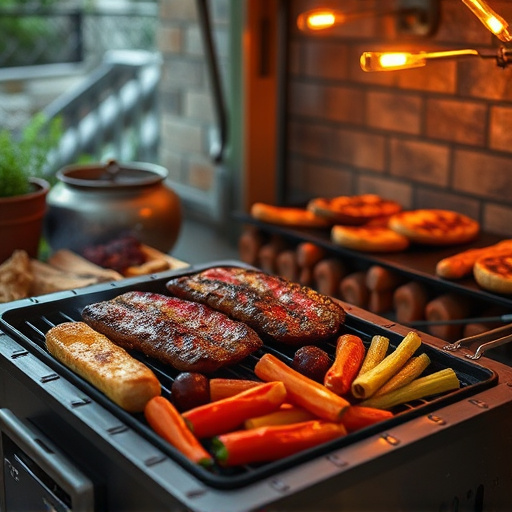Choosing the right pork shoulder cut with natural fat and good marbling is crucial for a delicious BBQ pork recipe. Craft a seasoning blend of salt, pepper, garlic powder, paprika, cayenne or chili powder, thyme or rosemary. Slow roast at low temps (225-250°F/107-121°C) to break down collagen and create tender, juicy meat. Smoke using techniques like cold smoking for tenderness or hot smoking for a charred flavor. Rest the pork shoulder for 15-20 minutes before slicing against the grain for maximum tenderness. Serve with sides and sauces for a customizable BBQ experience.
“Unleash your inner BBQ master with this mouthwatering guide to crafting the perfect tender pork shoulder. From selecting the ideal cut to achieving a crisp crust, we’ll walk you through every step of this classic dish’s transformation. Learn to create a seasoning blend that will tantalize your taste buds and discover slow-roasting techniques for incredibly tender meat. Master smoking techniques to infuse flavor, then finish with a glaze that sends your BBQ creations over the top. This comprehensive bbq pork recipe ensures a delicious experience every time.”
- Selecting the Perfect Pork Shoulder Cut
- Creating a Mouthwatering Seasoning Blend
- Slow Roasting for Tender Meat
- Smoking Techniques for Flavor Infusion
- Achieving the Ideal Crust and Appetizing Glaze
- Resting the Meat: Why It's Essential
- Slicing and Serving Tips for Maximum Enjoyment
Selecting the Perfect Pork Shoulder Cut
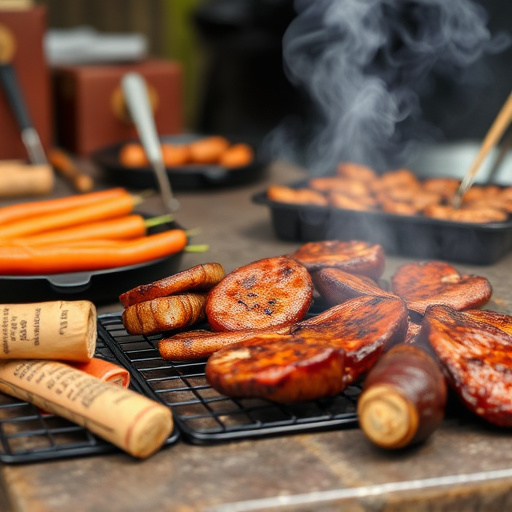
When it comes to crafting the ultimate BBQ pork recipe, choosing the right cut is half the battle won. For a tender and juicy result, opt for a high-quality pork shoulder. Look for a bone-in roll with a good layer of fat; this ensures the meat stays moist during the slow cooking process. The fat acts as a natural barrier, preventing overcooking and adding flavor as it renders during smoking.
A well-marbled cut with visible flecks of fat is ideal. This not only contributes to the overall taste but also helps keep the pork shoulder succulent. Avoid cuts that are too lean, as they may become dry when smoked for an extended period. Selecting the perfect piece of meat is a crucial step in achieving that mouthwatering, slow-smoked pork dish you’ve been dreaming of.
Creating a Mouthwatering Seasoning Blend
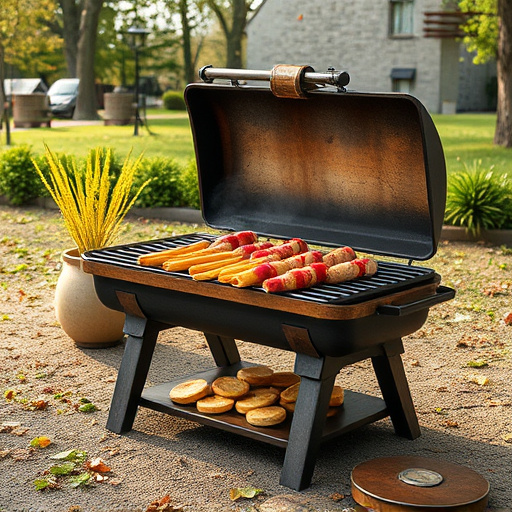
Creating a mouthwatering seasoning blend is an art that can transform your BBQ pork recipe from good to extraordinary. Start by combining coarse sea salt, black peppercorns, garlic powder, and paprika for a robust base. Adjust quantities based on personal preference; a generous amount of each will infuse the pork with depth and complexity. Consider adding a touch of cayenne or chili powder for heat enthusiasts, or a sprinkle of dried herbs like thyme or rosemary for an aromatic twist.
Mix your blend well until evenly distributed, then rub it generously over the entire pork shoulder. This step is crucial as it not only enhances the flavor but also helps to tenderize the meat during the slow-smoking process. The key is to be generous and ensure every part of the pork comes into contact with the seasoning, promising a mouthwatering BBQ experience for your taste buds.
Slow Roasting for Tender Meat
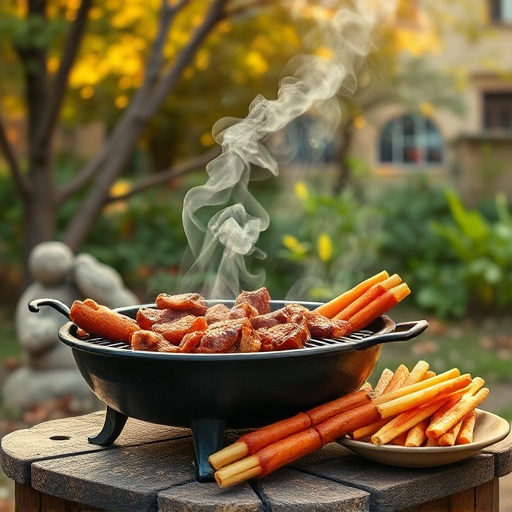
Slow roasting is a technique that transforms tough cuts of meat, like pork shoulder, into melt-in-your-mouth tenderness. This method involves cooking the meat at low and consistent temperatures for an extended period, allowing collagen to break down and transform into gelatin. As a result, the pork becomes incredibly juicy and flavorful. For a perfect BBQ pork recipe, this slow roasting technique is key to achieving that desired tenderness. It ensures that every bite is packed with rich, smoky flavors, making it a game-changer for any barbecue enthusiast.
Smoking Techniques for Flavor Infusion
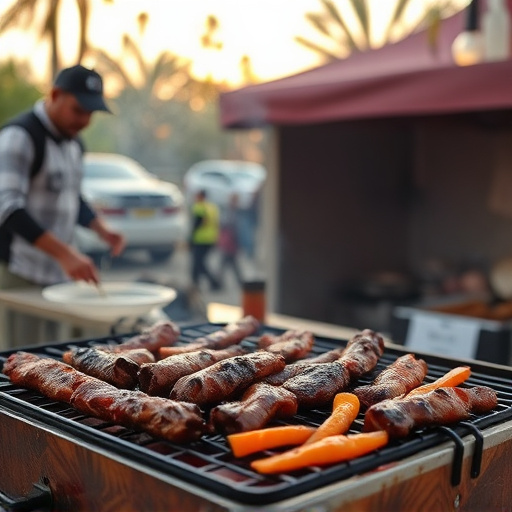
Smoking is a time-honored technique that significantly enhances the flavor of pork shoulder in any BBQ pork recipe. The process involves exposing the meat to heat and smoke, creating a unique and complex taste profile. Different smoking techniques offer diverse flavor infusions, from rich, smoky notes to subtle, delicate aromas.
One popular method is cold smoking, where the meat is slowly smoked at lower temperatures, typically below 100°F (38°C). This technique imparts a mild, woody flavor and helps tenderize the pork shoulder. In contrast, hot smoking involves cooking the meat over high heat, around 225-250°F (107-121°C), infusing it with a robust, charred taste. For an extra layer of depth, some BBQ enthusiasts employ a combination of both methods, creating a distinctive flavor profile that sets their pork shoulder apart from the rest.
Achieving the Ideal Crust and Appetizing Glaze

To achieve the ideal crust on your BBQ pork recipe, start by selecting a high-quality pork shoulder with good marbling. Season generously with a blend of salt, pepper, paprika, and brown sugar, letting the meat rest for an hour to allow the flavors to penetrate. This step is key in developing both flavor and texture.
For an appetizing glaze, combine BBQ sauce with a touch of honey or maple syrup, creating a sticky, sweet, and savory mixture. Brush this glaze onto the pork shoulder during the last 30 minutes of smoking, repeatedly applying it as the meat gets hotter to ensure a crisp, golden crust forms. The result is a mouthwatering combination of tender, juicy meat and a delectable caramelized exterior.
Resting the Meat: Why It's Essential
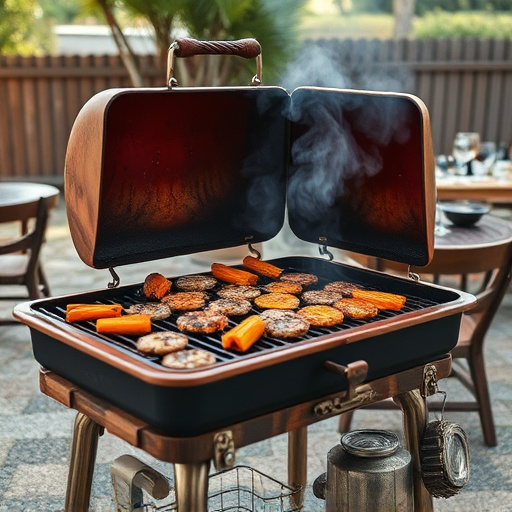
Resting the meat is a crucial step in achieving tender, flavorful BBQ pork shoulder. After smoking your pork to perfection, allowing it to rest for 15-20 minutes per pound ensures that the juices redistribute evenly throughout the meat. This simple act locks in moisture, enhancing both the texture and taste of the final dish. Think of it as a chance for the pork to “catch its breath” after the intense heat of smoking, resulting in a juicier, more flavorful BBQ experience for your palate.
Slicing and Serving Tips for Maximum Enjoyment
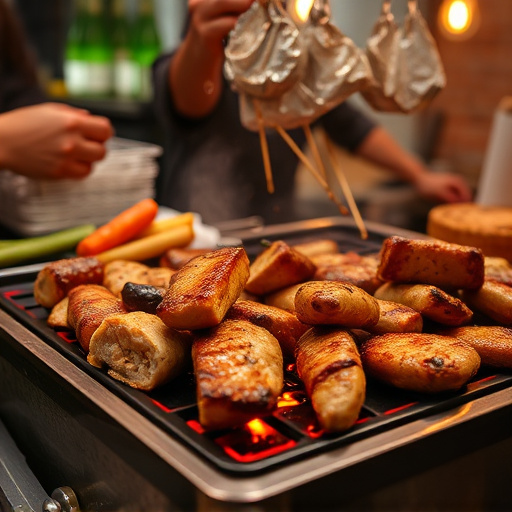
For the ultimate BBQ pork experience, slicing and serving your tender pork shoulder correctly is key. After slow-cooking and smoking to perfection, allow the meat to rest for 15-20 minutes before slicing. This lets the juices redistribute, ensuring every bite is juicy and flavorful. Opt for thin, diagonal cuts against the grain – this breaks down tough fibers, making the pork incredibly tender.
When serving your BBQ pork recipe, consider offering a variety of sides like coleslaw, mac ‘n’ cheese, or crispy fries to complement the rich, smoky flavor. Don’t hesitate to get creative with sauces too – whether it’s a classic barbecue sauce, a tangy mustard-based glaze, or even a simple sprinkle of salt and pepper – let your guests customize their plates for an unforgettable dining experience.
